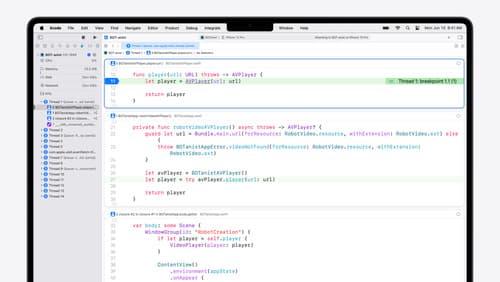Concurrency Safety
Asked on 2024-08-13
1 search
Concurrency safety in Swift, particularly with the introduction of Swift 6, focuses on eliminating data races by ensuring data race safety at compile time. This is achieved through several mechanisms:
-
Data Race Safety by Default: In Swift 6, data race safety is enforced by default, turning potential data race issues into compile-time errors. This significantly enhances the security and reliability of applications by preventing runtime data races, which can lead to crashes and unpredictable behavior.
-
Actors and Sendable Protocol: Swift introduces actors, which are reference types that automatically protect their state by serializing access, allowing only one task to execute at a time. The
Sendableprotocol ensures that values shared between concurrency domains are safe, preventing concurrent access issues. -
Low-Level Synchronization Primitives: Swift 6 includes new low-level primitives like atomics and mutexes for synchronization. Atomics provide efficient, lock-free implementations, while mutexes ensure mutually exclusive access to shared resources.
-
Incremental Migration and Concurrency Checking: Developers can incrementally adopt Swift 6's concurrency features. By enabling strict concurrency checking in Xcode 16, developers can identify and address concurrency issues in their codebase, even if some modules or libraries have not yet been updated to Swift 6.
For more detailed guidance on migrating to Swift 6 and adopting these concurrency features, you can refer to the session Migrate your app to Swift 6 (11:05) which discusses enabling complete checking in the watch extension.

A Swift Tour: Explore Swift’s features and design
Learn the essential features and design philosophy of the Swift programming language. We’ll explore how to model data, handle errors, use protocols, write concurrent code, and more while building up a Swift package that has a library, an HTTP server, and a command line client. Whether you’re just beginning your Swift journey or have been with us from the start, this talk will help you get the most out of the language.

What’s new in Xcode 16
Discover the latest productivity and performance improvements in Xcode 16. Learn about enhancements to code completion, diagnostics, and Xcode Previews. Find out more about updates in builds and explore improvements in debugging and Instruments.

What’s new in Swift
Join us for an update on Swift. We’ll briefly go through a history of Swift over the past decade, and show you how the community has grown through workgroups, expanded the package ecosystem, and increased platform support. We’ll introduce you to a new language mode that achieves data-race safety by default, and a language subset that lets you run Swift on highly constrained systems. We’ll also explore some language updates including noncopyable types, typed throws, and improved C++ interoperability.
